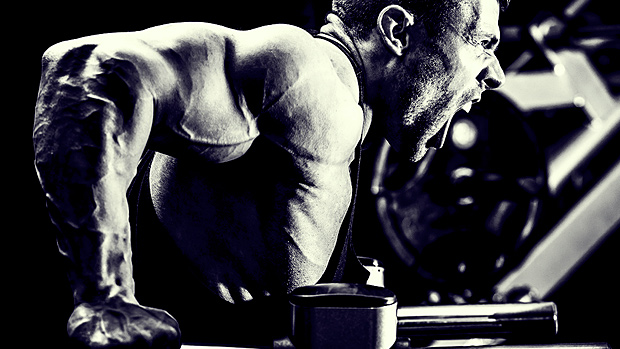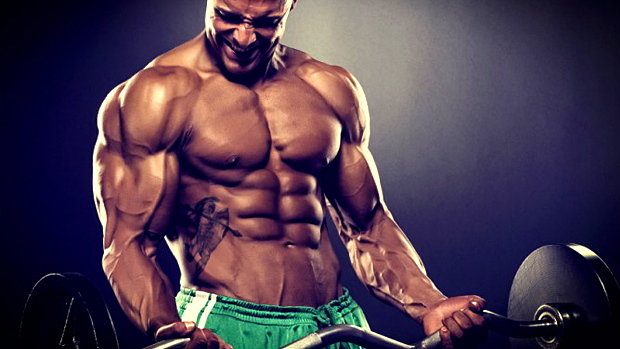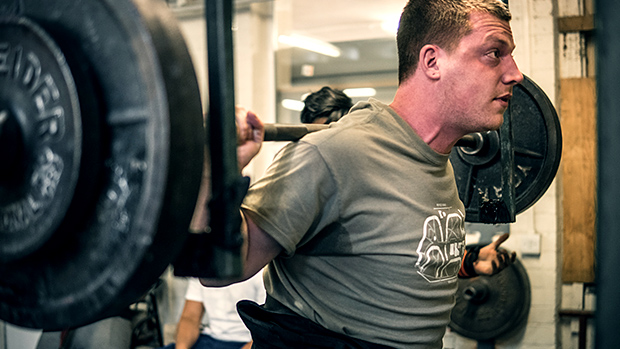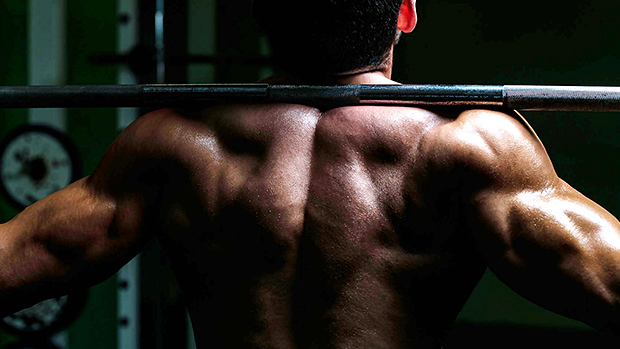Ask any training expert how to get big and strong and he'll tell you about progression and consistency. But ask him how to make consistent progress and he'll tell you about variety... at least he should.
Why? Because as much as we want to live and die by the barbell, a lack of variation leads to stagnation. This goes for busting physical plateaus and staying motivated. Shake things up to keep making progress and keep yourself excited about hitting the gym. Here are 16 cool exercises (you're probably not doing) that'll help.
1. Prone Glute Curl
Your gluteus medius might be weak. And you won't know it unless you've tried this.
Here's what to remember:
- Keep your quads off the ground.
- Don't use your arms.
- Flex your feet.
2. Airborne Lunge, Single-Leg
It's possible to squat a lot of weight and still not be able to come close to doing this exercise. It requires coordination, a controlled descent, and the ability to raise yourself back up without keeling over.
Once you can do 10 reps per leg with the top of the foot and lower leg touching the ground, the next step is holding your back foot (like a quad stretch) and only touching the knee down.
3. Landmine Sumo Deadlift
It's odd that this exercise isn't more popular. There's less restriction on weight compared to dumbbells or kettlebells, and it's easier to do than the barbell sumo deadlift (where many struggle to maintain proper form and end up training low back harder than glutes). Try this instead.
The nice thing about this version is that you can lean forward, keep your weight on your toes, and power through with your extension. This activates the glutes better, and may make it more advantageous for athletic performance.
4. Foam Roller Hamstring Pull-In
If you've done ham curls on a Swiss ball you know they can be deceivingly challenging when done properly with the hips fully bridged. Foam roller pull-ins can be equally as challenging, and some might argue, more effective. With this exercise, you can concentrate fully on the bridge without worrying about the stupid Swiss ball.
Too easy? Try doing it with only one leg.
5. Lawnmower Back Extension
Chronic sitting keeps you from using your glutes or firing your core muscles. It also means your hip flexors and hamstrings are getting tight. All of this contributes to strain on other areas of the body. One of the muscles getting overworked is the quadratus lumborum (QL), which originates at the hip bone and attaches to the spine. This can leave you chronically tight and chronically sore.
This exercise was originally designed to stretch those QL muscles, but it has the added benefit of some isolated glute work (specifically the gluteus medius) at the top.
Your goal should NOT be to go heavy with this, but rather stretching and reaching (across the body) with a very slight, pain-free twist. You'll see non-weighted reps at the start of the video.
6. Single-Leg Glute Bridge
No matter how strong you are, it won't be easy to do 10 of these per leg with perfect form.
Good form means refraining from using the non-working leg, driving your heel into the ground, and forcing the one glute to do all the work. For a little variation, try the same movement between two benches and resistance.
7. Foam Roller Walkout/Rollout
Your foam roller is basically a giant rolling pin, and you can use it to strengthen and build your abs. Here's what to do.
Aside from the ability to maintain a wider hand position, the biggest benefit with the foam roller is the opportunity to progress. The ab wheel or barbell variations may stop at the knees, but the unique padding of the foam roller lets you get up onto your feet.
You can also make it harder:
And, yep, even harder.
8. Gymnastic Knee Raise
Body weight gymnastic moves are always impressive. Probably because you can try them yourself and quickly appreciate the difficulty, but also because the control demonstrated by the pros is something to be admired.
This exercise is a great progression for getting to the L-sit. It's also a great alternative for standard leg raises or active planks.
It's different than the plank because it challenges your shoulder stability from an upright anterior position. And when compared to hanging knee raises, it takes the grip out of the equation (which may be preventing you from getting the most out of your core). To increase the difficulty, try adding a pause at the top, or phasing in some straight-leg reps.
9. Dumbbell Pull-Across Plank
Other than actually activating your core (and shooting for intensity over duration), the key to making planks not suck is to keep your mind busy, whether that's lifting limbs, walking around, or moving weights.
This exercise will hammer the trunk when you maintain a rigid plank. And once you've got that down, you can raise the difficulty by increasing the load or moving the weight in front of the hands.
10. Single-Arm Carry
The main action of the core is to resist flexion, extension, rotation, etc. So one of the best ways to train the core is to put yourself in a position where that's necessary. Farmers carries are great because they force you to fight for a neutral spine and strong upright posture. But they can be enhanced by doing them one-arm at a time. This forces you to resist laterally and pay more attention to your overall body position.
Most people have to make a conscious effort to avoid relying on an anterior pelvic tilt (over-arching).
11. Rolling Dip
Can't do a muscle-up yet? Then perfect this first.
It's not an easy modification though, so don't do it unless you're comfortable doing standard dips with your bodyweight plus 50 percent.
12. Kneeling Rest-Pause Chin-Up
This is a double-duty exercise. It serves two purposes – it builds explosiveness on the concentric (pulling) portion of a chin-up, and it can help you perfect a proper pull-up.
You'll benefit from it if you're a beginner or an advanced lifter, and it can take you from single-chinner to multiple-chinner. This could be the result of increased grip strength and scapular retraction, which becomes a necessity since there's no need to swing, hump, or kip your way up.
13. Trap Bar Bent-Over Row
You might already know this one, but if you don't, it can transform your training.
The standard barbell can be awkward to row. Fortunately, the trap bar solves this problem with its favorable hand position and extended range of motion at the top.
14. Burpee Walkout
Though the burpee has become popular, you've probably never seen this option. It'll give you a far better upper-body blast than the traditional hop-in, hop-back burpee.
Keep your legs as straight as possible on the walkout and the walk-back, and alternate between arms.
15. Fisherman's Row
During the traditional one-arm bent-over row, it's common to rely too much on the legs. This variation forces you to use your core instead, while getting a super stretch of the lat. It's called "fisherman's row" because it's like you're reaching out of the boat to grab the big catch-of-the-day.
- Start with knees at a 45 degree angle on bench.
- Keep your torso parallel with floor.
- Bring the dumbbell to hip pocket area.
- Rotate from a pronated (at bottom) to neutral (at top) grip.
- Use a 1-2 second pause and relax when fully extended.
16. Bridged Floor Press
Is the bridged floor press more functional than the bench press? Yes. Does that mean it will improve your bench press strength? No. Although similar to a push-up, it will improve your ability to activate your core while pressing, which is critical for developing a bulletproof midsection.
Researchers have found that the ab muscles are better activated with integrated core exercises (glutes and shoulders recruited at the same time), as opposed to complete isolation. So, it's your call whether to do this for upper body or core, but given the ability to pack on some serious weight, there's no reason you can't get some decent pec, tricep, and shoulder work from it.
The bridged hips give you the ability to acquire full range of motion at the bottom (unlike the standard floor press), generate a decent amount of push from your neck/upper back, and get more of a total body workout than your standard decline bench press.





